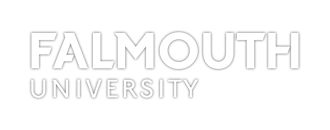Cuts, fades and layers: Audio production interfaces and mental schemas for radiophonic storytelling
Wincott, Abigail  ORCID: https://orcid.org/0000-0002-3162-644X
(2023)
Cuts, fades and layers: Audio production interfaces and mental schemas for radiophonic storytelling.
In: IAMCR Annual Conference 2023, 9-13 July 2023, Lyon, France.
ORCID: https://orcid.org/0000-0002-3162-644X
(2023)
Cuts, fades and layers: Audio production interfaces and mental schemas for radiophonic storytelling.
In: IAMCR Annual Conference 2023, 9-13 July 2023, Lyon, France.
Preview |
Text
WINCOTT IAMCR 2023 3719.pdf - Accepted Version Available under License Creative Commons Attribution Non-commercial. Download (500kB) | Preview |
Abstract / Summary
Audio journalists and documentary makers who use spatial audio talk about the need to think and work differently, planning sound scenes in 3 dimensions, avoiding usual techniques such as layering audio tracks or making frequent cuts (Wincott, Martin and Richards 2021). Object-based audio – newer technology being developed to make spatialised audio programmes – asks them to think about their work as composed of sound objects that will be distributed in space and time, rather than as a finished linear mix.
As big broadcasters in France, Germany and the UK invest in rolling out spatial sound technology, spatial techniques seem to be challenging for many programme-makers, who continue to apply non-spatial format conventions: fading, layering, cutting and narrating, thus undermining spatiality and immersion of their work.
In this presentation I explore the role production technology might play in these difficulties, by thinking of technological interfaces as metaphors that attempt to represent the nature of sound and of narrative, and also to represent the cognitive and production processes of programme-makers. The nature of material and virtual interfaces used to produce programmes facilitate and constrain ways we think about and produce our work (Galitz 2007; García-Crespo, Ramahí-García and García-Mirón, 2021).
Modern editing software has processes designed into it that might not match the processes by which work is produced, as Duignan, Noble and Biddle (2010) found with music composers. Software uses a vocabulary of visual abstract representations of sound and process on a flat screen, including audio ‘tracks’, waveforms, cuts and fades, files, folders and so on. Some of these terms predate computer editing, and draw on tape and mixing desk technology, on typewriters and paper. How might they fail to capture spatial thinking and spatial production processes?
| Item Type: | Conference or Workshop Item (Paper) |
|---|---|
| Uncontrolled Keywords: | radio, audio, journalism, features, sound, user interface design, media studies |
| Subjects: | Computer Science, Information & General Works Communication > Media > Digital Media Writing & Journalism > Journalism Communication > Media Music > Sound Design Technology |
| Courses by Department: | The School of Writing & Journalism > Journalism |
| Related URLs: | |
| Depositing User: | Abigail Wincott |
| Date Deposited: | 05 Jul 2023 10:53 |
| Last Modified: | 23 Nov 2023 19:30 |
| URI: | https://repository.falmouth.ac.uk/id/eprint/4990 |
Actions
 |
View Item (login required) |

 Tools
Tools Tools
Tools